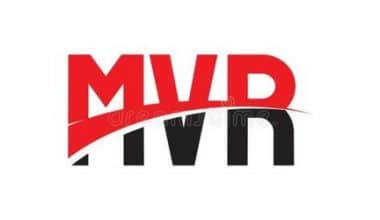If you want to lead or start a business, you’ll be responsible for driving its vision, goals, and success plan. A purpose statement provides the foundation for doing so effectively. While some degree programs discuss purpose statements (PS), you may be unaware of how this concept can apply to your future profession. In this article, we discuss what a purpose statement is, its uses, and how to write your own purpose statement using a good format, with an example that can serve as a guide.
What is a Purpose Statement?
A purpose statement is exactly what it sounds like a statement outlining the goal of your company. Typically, this statement contains a few phrases that describe your organization’s “purpose.”
In a word, a purpose statement outlines your company’s direction and the reason for its existence. It provides a response to the simple question: Why is your company doing what it is doing?
Your PS is influenced by your principles, values, ethics, beliefs, and other factors that motivate you to make a difference. It simply and concisely describes why your business was founded and why it is on that journey.
How is a Purpose Statement Different From a Mission Statement?
The first step in comprehending a purpose statement is distinguishing it from a mission statement, as each serves a distinct purpose in your business plan.
Mission Statement vs. Purpose Statement
A purpose statement is a single statement that outlines why your organization exists other than to make a profit. It also shows how your product or service benefits the people you serve. Once you’ve determined your purpose, you’ll need a set of goals to help you achieve it. This is when the mission statement comes into play.
A mission statement, first and foremost, is actionable. It explains the road you must take to achieve your goal. So, whereas a purpose statement is concerned with the future, a mission statement is concerned with the here and now.
Your company purpose, unlike a company mission, is not something that can be fulfilled or checked off a list. A purpose statement exemplifies your company’s constant efforts to advance.
Ways You Can Use a Purpose Statement
A purpose statement is vital because it helps consumers and workers understand what the organization is all about. A PS may be used by a company for the following reasons:
#1. Increase employee motivation
Employees can better grasp their role in helping the firm accomplish its goal when they understand what drives the business and how customers benefit. This is likely to boost motivation among all employees who want to make a difference and are passionate about the work they do for consumers.
#2. Meet company goals
When there is a PS that drives the firm, a company is better able to fulfill its goals. All employees, from new hires to executives, understand the company’s direction and the importance of their contributions. When everyone is working toward the same goal, it can be a fully functional business with goals at the forefront.
#3. Establish employee loyalty
Employees love working for a company that treats them as valuable members of the team. Communicating a strong company purpose boosts this emotion since employees feel like they are part of a team working toward the common objective of the organization. A pPS, like a value statement, allows employees to operate within the underlying ideals that comprise the firm while still feeling good about the work they’re doing.
#4. Distinguish itself from the competition
A PS outlines what distinguishes an organization. Employees and customers may observe how a firm differentiates itself in the marketplace, which strengthens the company brand.
How to Write a Purpose Statement
Creating a firm mission statement is no easy feat. It necessitates a thorough understanding of why your business exists and where it expects to go in the future. If you’re still lost, here are some steps and a format for writing a purpose statement for your company:
#1. Form a purpose statement committee
Consider creating a committee of employees from several departments to incorporate multiple points of view into your goal statement. Encourage all committee members to offer their views and opinions so that all perspectives are represented in the final product.
#2. Figure out “the why”
A purpose statement focuses on what the company does for its target audience. To find out, consider why the company was formed in the first place. If your company sells a product or service, consider why it is valuable to clients and what distinguishes the company in the marketplace.
#3. Define who the company serves
Before you can draft a purpose statement, you must first comprehend who or what the organization serves. Remember that a PS is specially written about the people who benefit from doing business with the company, so one of the first stages is to identify who those consumers are. Consider their goals, aspirations, hobbies, interests, and any obstacles they may face, particularly if the company’s products or services might assist in alleviating some of those.
#4. Define the product or service offerings
All employees are presumably aware of the many products and/or services that their firm provides but consider them further. Consider the exact roles of those items or services, the problems they solve, and alternative uses for those offers. A camera, for example, is used for more than just shooting images; a family uses a camera to document crucial milestones so they may look back on them fondly.
#5. Know what makes you unique
The purpose statement will define what distinguishes you in the marketplace. Consider what other companies are doing and then respond to the following questions:
- Are we providing a different product or service?
- Do we have a different target audience?
- Are we solving a particular pain point that no other company is solving?
- How do we enhance our customers’ lives?
#6. Write down focus keywords
Consider crucial keywords for your company and use them in the purpose statement. These buzzwords should stimulate and inspire as they highlight the company’s spirit.
#7. Ask for feedback from stakeholders and other employees
Even if you have a purpose statement committee in place, it is critical to solicit input from company stakeholders and extra personnel. This can be done before creating the purpose statement or before finalizing it so that any necessary changes can be made.
#8. Finalize the purpose statement
After gathering feedback, focusing on what the firm offers, and identifying a target audience, it’s essential to finalize the purpose statement and distribute it to all employees so that everyone understands the company’s clear focus.
Example of Purpose Statement
Here are some examples of purpose statements to help you write your own:
Purpose Statement Example #1:
“Our purpose is to inspire every family in the world to enjoy Sunday dinner together.”
Purpose Statement Example #2:
“Our purpose is to support the health and well-being of our planet and everyone who lives here.”
Purpose Statement Example #3:
“Our purpose is to increase the accessibility of life-saving equipment for patients in underdeveloped countries.”
Purpose Statement Example #4:
“Our purpose is to provide people with the ability to purchase products they need at a price they can afford.”
Purpose Statement Example #5:
“Discovering the value of ‘real’ beauty and improving self-esteem worldwide.”
Elements Of A Great Purpose Statement
Writing a good purpose statement requires several components. When establishing one for your organization, prioritize the following elements:
#1. It is inspiring.
When you hear a great brand PS, it should send shivers down your spine. To be the spark at the heart of your firm that keeps the engine running, it should be memorable, ambitious, motivating, and even poetic.
#2. It should be concise.
To enhance memorability, a good PS should be as brief and sweet as feasible. You should be able to question any employee in the corridor and they should be able to recite it from memory.
#3. It should have a purpose and a goal.
Many outstanding mission statements include a “role” for the brand as well as an “outcome” that the brand hopes to see in the world.
#4. It could have an unresolvable tension.
A strong PS may sometimes struggle with two opposing goals that offer room for continual innovation and progress.
#5. It strikes a balance between aspiration and precision.
A good purpose statement should be ambitious but not ambiguous. It must be precise while yet leaving room for a company to expand.
The PS is “to help make the world a better place.” It’s aspirational but useless, a cliche that serves no purpose.
#6. It can either be a “general purpose” or a “social purpose” statement.
This is definitely one of the most often requested questions. Is it necessary for every business to have a social or environmental goal built into its mission?
Some businesses are “general purpose,” which means that their fundamental purpose statement does not have to have a social or environmental impact. (Note: this does not mean they can’t still handle them as part of a wider portfolio of initiatives-it only means that that’s not their fundamental reason for existing).
Some businesses are “social purpose” businesses, which means that they were created to address a social or environmental concern.
#7. It can evolve with the times.
Finally, a fantastic PS does not have to be rigid. It may evolve as the company expands or as the context surrounding it changes, necessitating a re-frame of what it stands for.
Remember, Tesla’s original statement?
“We exist to accelerate the planet’s transition to sustainable transport.”
But here’s how Tesla’s purpose statement reads now:
“We exist to accelerate the planet’s transition to sustainable energy.”
Did you notice the shift in the word? “Transport” was replaced with “energy.” With that single word, Tesla signified that they were interested in more than just the Tesla car in your garage, but also the Tesla solar roof tiles on top of your house, as well as the Tesla Powerwall battery, which held the energy they received (only to be used to power your car).
Tesla stated that they were no longer just a car company with that one-word change in their purpose: they want to be the “Apple of clean energy,” and own the interconnected ecosystem in your life. Their competitive environment expanded to encompass not just other automakers, but also all power utilities. That is the ability of a well-crafted purpose statement to convey intent and clarity.
What Is a Good Purpose Statement?
A good PS should be ambitious but not ambiguous. It must be precise while yet leaving room for a company to expand. The PS is “to help make the world a better place.” It’s aspirational but useless, a cliche that serves no purpose.
How Do You Start a Purpose Sentence?
A PS should begin with a single idea or concept, followed by a wide definition of that idea or concept.
What Is a Good First Sentence Statement of Purpose?
Most Statements of Purpose Begin Like This: “I am honored to apply for the Master of Science program at the University of Example because for as long as I can remember, I have had a love affair with science. Since I was a kid in school, I have known I wanted to be a scientist/engineer.”
How Do You Start a Strong Statement of Purpose?
You can begin by:
- Discuss your long-term aim and how it relates to your desire to pursue the course for which you are applying.
- Present your grasp of the selected field and write about how you want to contribute to it.
- In 2-3 lines, explain your background and how it relates to your future aspirations.
What Is a Personal Purpose Statement?
A personal mission statement is a one- to two-sentence slogan that explains how you define yourself as a person or team member. It highlights your personal or professional goal and explains why it is significant to you.
Conclusion
We understand that you do not want to jeopardize your purpose statement. Nobody does. After all, this is your one and only chance to show the world how wonderful you are. There’s no need to worry. Simply put what we’ve spoken about into action, solicit feedback from your employees and customers, and your PS will be ready in no time. (To be honest, it will take some time because it is a significant deal.)
We know you’ll come up with a terrific purpose statement, no matter how much time and work it takes. We’re always on your side! Also, please keep us updated on how things progress. Best wishes!
Related Articles
- INCOME STATEMENT: Formats, Examples, and How To Prepare One
- FINANCIAL STATEMENT OF A COMPANY: Best 2023 Samples & Templates to Learn From
- HOW TO GET A BANK STATEMENT FROM YOUR BANK
- FINANCIAL STATEMENT: What Is It, Examples, Types & Analysis
- HOW TO CREATE A BRAND 2023 Guide (+ Free Tips)






